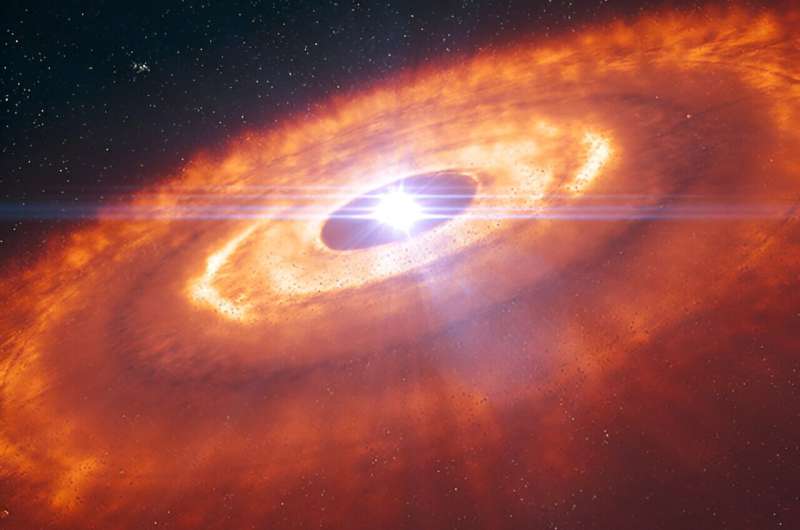This article has been reviewed according to Science X's editorial process and policies. Editors have highlighted the following attributes while ensuring the content's credibility:
fact-checked
trusted source
proofread
Dust growth model finds planets may form more easily than previously thought

The building blocks of new planets could form more easily than previously thought, according to calculations by a team led by a RIKEN astrophysicist.
Planets are birthed from the clouds of dust and gas that whirl around young stars. Particles of dust within these protoplanetary disks gradually coalesce into grains, which then aggregate into planetesimals. These planetesimals, which may be several kilometers wide, can potentially become the foundations of new worlds.
Astronomers are still figuring out exactly how each of these stages occurs. For example, planetesimals might form when dust grains collide and stick together, a process known as coagulation.
Alternatively, the drag felt by dust grains as they move through the protoplanetary disk could concentrate the dust into loose clumps, a process called streaming instability. "If these clumps are massive enough, planetesimals could form by self-gravitational collapse of the clump," explains Ryosuke Tominaga of the RIKEN Star and Planet Formation Laboratory.
To assess the relative importance of these two processes in the formation of planetesimals, Tominaga and Hidekazu Tanaka of Tohoku University in Sendai, Japan, created a physical model to simulate the behavior of dust grains in protoplanetary disks. Their findings are published in The Astrophysical Journal.
Based on previous simulations of planetesimal formation, their model included a range of factors such as the speed and stickiness of the dust grains. If grains collide too quickly, for example, they may actually break apart rather than forming a larger grain.
"Some studies have suggested that dust grains are not so sticky, and that their growth may be limited by fragmentation in planet-forming regions because of high collision velocities," Tominaga says. "This is thought to be one barrier preventing dust growth toward planetesimals."
Tominaga and Tanaka's model estimated how long it would take for dust grains to grow by coagulation, and compared it to the time scale of clumping by streaming instability.
The model showed that both processes occur at similar rates. Indeed, the clumping and coagulation processes help each other to proceed quickly, acting as a positive-feedback loop.
"Dust growth enhances the clumping efficiency, while stronger clumping promotes dust growth," says Tominaga. "This feedback has been predicted to promote planetesimal formation."
The effect held true for both icy dust grains and silicate grains, which are more like sand.
For now, the model provides a very simple estimate of dust growth, says Tominaga. He hopes to carry out higher precision numerical simulations to offer a more-detailed view of these planetesimal formation processes.
More information: Ryosuke T. Tominaga et al, Rapid Dust Growth during Hydrodynamic Clumping due to Streaming Instability, The Astrophysical Journal (2023). DOI: 10.3847/1538-4357/ad002e
Provided by RIKEN




















